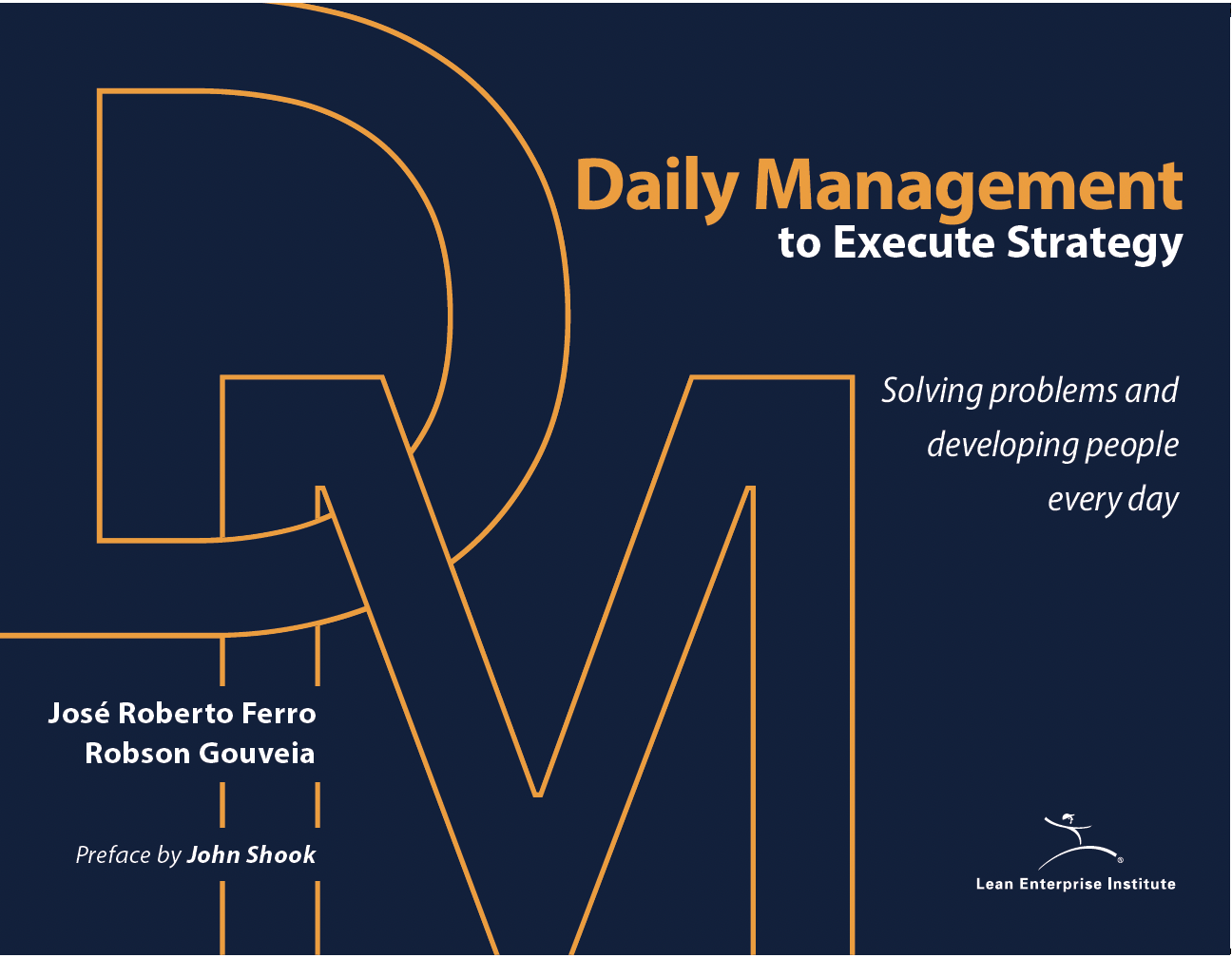Leader standard work exists to enable leaders to better support other people in the organization who are closer to the customer in creating value. It’s about servant leadership. With leadership standard work, I think it’s important for any organization to start simple and then evolve. Taking an advanced form from another organization and dropping it in the middle of company that is just learning how to spell “standard work” just doesn’t work. Whatever form you use, in my opinion, here are eight key success factors:
 Start with something and try it.
Start with something and try it.- Record both what works and what doesn’t. This will become the baseline for improvement.
- Managers should carry sheets around with them and fill them out throughout the day.
- Collect sheets every day to guard against a manager going back and filling in data for the entire week. People should not be reprimanded for NOT filling out the sheets. A blank sheet is a symptom of a problem; blank sheets should prompt a problem solving discussion. (For example, why don’t you have time to fill out the sheet? What is distracting you? Should that be on the sheet? Is there a way we can remove that barrier?)
- Follow the PDCA (Plan, Do, Check, Adjust) learning cycle. Standard work is always our best KNOWN method. The initial sheet is the PLAN – our standard. We then DO and record data, take notes. We then discuss (CHECK) what is working, what isn’t and what we learned. We then ADJUST the standard based on the observations in the CHECK step. This will evolve the standard work over time so that rather than feeling like a chore, the standard work is useful and effective.
 Recognize that the higher a person goes in the organization the harder it is to standardize all of what they do. That is fine. Leave open time blocks and flexibility in the schedule. The trick is to figure out the optimal time for this (see #5).
Recognize that the higher a person goes in the organization the harder it is to standardize all of what they do. That is fine. Leave open time blocks and flexibility in the schedule. The trick is to figure out the optimal time for this (see #5).- I think it is best to teach an organization the PROCESS and PURPOSE of developing management standard work versus just providing the tool. This allows leaders to evolve as their systems evolve and develop something that works for them. It may take a little more effort upfront, but it’s much more sustainable in the long run (kind of like a Jedi building their own light saber).
- Finally, and most importantly, have a clear purpose for the leader standard work. Why are you doing this in the first place? Many organizations start down this path because if the frontlines have standard work, so leaders probably should, too. Or, because they have heard of the concept and think they need to do it to “be lean.”
Creating standardization in the organization is like building an arch. You don’t start from one end and build to the other; you have to start at both ends and build in a fashion that makes way for the final goal. So there is leader standard work, but there is also standard work around the work processes themselves associated with creating value for the customer. The two are interdependent and should be evolved together.
Managing a Lean Enterprise
Learn how to drive performance and inspire innovation using hoshin kanri, daily management, and A3 process.





This article on Leader Standard Work (LSW) is a great reminder of the importance of building quality into every step of the process. In addition to LSW, I believe proactive measures and standardized procedures are also crucial for achieving consistent quality.
– Proactive measures: Identifying potential quality issues before production begins can save significant time and resources down the line. For example, conducting pilot runs, reviewing design specifications carefully, and involving quality control teams early in the planning stages can help nip problems in the bud.
– Standardized procedures and training: Having clear, well-documented procedures and ensuring staff are properly trained on them is another critical aspect of quality control. This helps to minimize errors and ensure everyone is working to the same high standards.
By combining LSW with these proactive measures and standardized procedures, organizations can create a robust quality management system that helps them deliver exceptional products and services consistently.
I agree, in my organzation LSW, as is well known, also help us to carry out in more effective way the Deviation Management and proper scalation process. In this case the people who are creating value to the costumer are raising hands about issues in their processes that need to be attended inmeadiatelly because the standard is not being reach for instance hourly productiont target. Scalation is triggered up to the top if deviation remains open. Then all support required is provided to arrive in a solution that afterwards need to be documented in an A3 report.